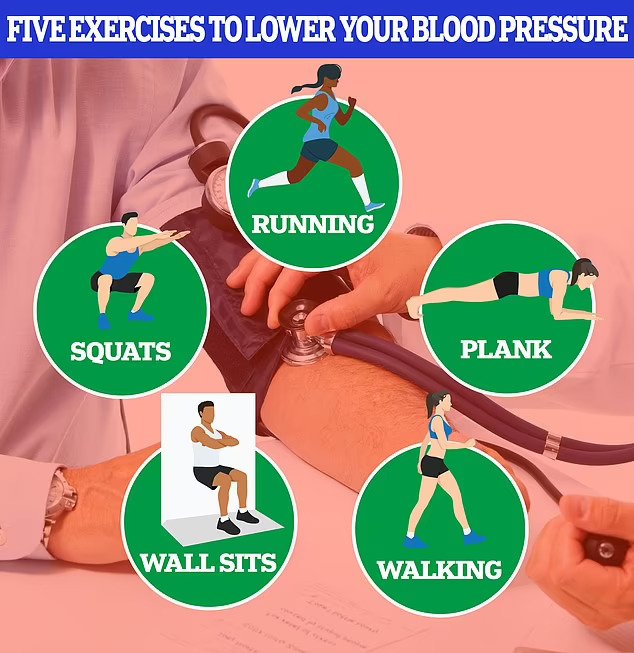Got High Blood Pressure? Why Doing the Plank or ‘Wall-Sits’ Might Be Better Than Going for a Swim

A brisk walk, cycle or swim is often the doctor’s order when it comes to high blood pressure. But now scientists suggest doing the ‘plank’ or ‘wall-sits’ are better exercises for helping to control hypertension.
A review of clinical data found that while ‘cardio’, or aerobic workouts were beneficial, static exercises designed to work the muscles had the most impact. The findings mean it could be time to review the current exercise guidelines for the prevention and treatment of high blood pressure, the authors say.
Current recommendations – such as walking and running – are largely based on older data that exclude the newer forms of exercise, such as high-intensity interval training (HIIT) and isometric exercise. Researchers at Canterbury Christ Church University, Kent, trawled databases looking for clinical trials reporting the effects of an exercise training intervention lasting two or more weeks on resting blood pressure.

These were classified as aerobic (‘cardio’), dynamic resistance training, a combination of these, HIIT, and isometric exercises. Blood pressure is expressed as systolic, the upper number representing the pressure as your heart pushes blood out, and diastolic, the lower one measuring the pressure as your heart rests.
Healthy resting blood pressure was defined as a reading below 130/85 mmHg; pre-high blood pressure as 130–139/85–89 mmHg, and high blood pressure as 140/90 mmHg or more. Their analysis of 270 trials between 1990 and 2023 involving nearly 16,000 participants, found significant reductions in resting systolic and diastolic blood pressure after all the various categories of exercise.
But the largest falls in both systolic and diastolic blood pressure were seen after isometric exercise training with 8.24/4 mmHg reductions, compared to 6.04/2.54 mmHg for combined training, 4.55/3.04 mm Hg after dynamic resistance training, 4.49/ 2.53 mmHg for aerobic exercise and 4.08/2.50 mmHg after HIIT.
Further analyses revealed wall squats (isometric) and running (aerobic) as the most effective individual exercises for reducing both measures of blood pressure, according to the findings published in the BMJ. The authors acknowledge differences between participants, statistical and methodological processes and exercise interventions may have influenced the findings.
Nevertheless, they conclude: ‘Overall, isometric exercise training is the most effective mode in reducing both systolic and diastolic blood pressure. These findings provide a comprehensive data-driven framework to support the development of new exercise guideline recommendations for the prevention and treatment of arterial hypertension.’
